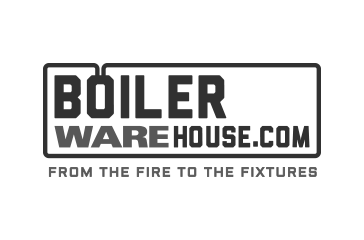Gas Pressure Switches
Gas pressure switches are a key component of your gas train to assure proper safety and operation of your burner. They prove you have adequate pressure to operate and will lock out your burner when you are either too low or too high of pressure. We stock many brands such as Ashcroft, Honeywell, Siemens, Antunes, and Dungs pressure switches.
If you do not see the part you want below, feel free to use the chat function and see if we possibly have the part you are looking for in stock.

Gas Pressure Switches Categories
-

HGP-G Manual Reset High Gas Pressure Switches -

HLGP-A Gas Pressure Switches -

Honeywell C6097A,B Air/Gas Pressure Switches -

LGP-G Manual Reset Low Gas Pressure Switches -

Model D Gas Pressure Switches -

Model H Gas Pressure Switches -

RHGP-G Automatic Reset Gas Pressure Switches -

RHLGP-A Gas Pressure Switches -

RLGP-G Automatic Reset Gas Pressure switches
Manufacturers View all
What Are Gas Pressure Switches & What Is Their Function?
Gas pressure switches maintain fuel safety
Gas-fueled boilers burn pressurized natural gas or propane. To make sure they do it safely, gas pressure switches linked to the boiler’s control systems confirm that properly pressurized fuel is being fed into the furnace.
Gas pressure switches monitor fuel pressure
The fuel flowing into a gas-fired boiler has to be properly monitored to ensure the right conditions for combustion. Gas pressure switches are mounted along the gas train to confirm that the fuel is at the correct pressure as it is fed into the boiler.
If the pressure is too high or too low, the switch will trip and alert the operator as it shuts off the gas supply entirely.
The Role Gas Pressure Switches Play in a Boiler
A boiler’s furnace needs a steady, consistent flow of gas to do its job properly and safely. If the pressure is too high, several things can go wrong. The boiler’s burners will generate a larger flame than they need to, overheating the boiler’s tank and leading to heat stress and damage. Too much gas pressure also wastes fuel and increases the amount of combustion byproducts flowing out of the stack. If the pressure gets high enough, it can even damage the burner itself, requiring recalibration, repair, or replacement. Under the right circumstances, fuel overpressure can even cause an explosion.
If the fuel pressure is too low, the burners won’t be able to sustain the correct amount of flame. This will cause the boiler to produce too little steam. Low gas pressure can also result in increased fuel consumption as the boiler’s control system tries to compensate. A flame that’s too low can also be extinguished more easily, leading to lost steam and even the risk of explosion.
What are the Effects of a Bad Gas Pressure Switch?
If a gas pressure switch fails open, it can shut off the fuel supply even if it’s flowing at the correct pressure. If a gas pressure switch fails closed, it can allow too much fuel into the furnace, resulting in higher temperatures in the boiler and the stack.
Things To Consider About Gas Pressure Switches:
- Regular gas pressure switch calibration is crucial to safe operation.
- Pressurized natural gas and propane have the potential to cause explosions and boiler damage if they aren’t properly regulated.
- Make sure your gas pressure switch is correctly rated for the specified pressure of your system, and for the specific kind of fuel you’re using.
Helpful Resources
Relevant WARE Videos on Gas Pressure Switches
Gas Pressure Regulation for Boiler Combustion
Gas Pressure Regulation Station
How To Check the Pilot Gas Pressure
Reading Gas Pressure Gauges on Gas Train
Getting the Right Gas Pressure to the Burner for Combustion
How to Check if a Boiler is at Rate
Rental Steam Boiler Accessories for Installation
900 HP Mobile Boiler Rental Inside Look
How Barometric Draft Controls Works in Steam Boilers
Zero Emission Power Solutions using a Steam Turbine
Annual Steam Boiler Open and Close
Protecting Steam Gauges and Switches with Siphon Loops
Explore over 750+ explanatory videos on boilers and boiler systems on our Youtube channel. Our videos can help you quickly grasp complex boiler topics. Watch more here!
Relevant WARE Blog Articles on Gas Pressure Switches
Handling The Pressure With Gas Pressure Switches
What the Heck is Liquid Natural Gas?
NFPA 85 Code: Gas Train and Venting
Different Types of Air Pressure Switches
Our informative and educational blog content can help you gain a deeper understanding of the boiler room. Read more here!
Technical Documents
Gas Pressure Switches FAQ
Do gas pressure switches require a manual reset?
It depends on the switch. Some switches automatically reset once safe conditions are restored, while others require a manual reset.
Where is a gas pressure switch located?
The switch is usually located near the burner, to confirm the gas is at the correct pressure right before it is fed into the burner. Some gas trains may have additional pressure switches mounted further up the supply line, or even at the gas meter itself.
How does a gas pressure switch work?
Gas pressure switches typically use a carefully calibrated diaphragm mechanism that moves in response to the pressure around it.
What do I do if my gas pressure fluctuates too much?
Installing a gas regulator can help preserve consistent gas pressure to prevent unwanted gas pressure switch operation.
Are pressure and flow rate the same thing?
No, gas pressure and flow rate are independent of one another. Think of it this way: A gas line may be at the right pressure, but if it doesn’t have the capacity to sustain that pressure once the burners start firing, the flow rate is too low.











